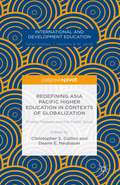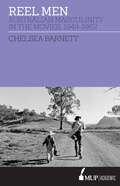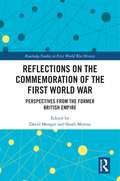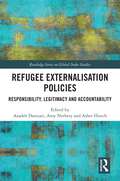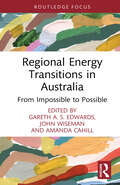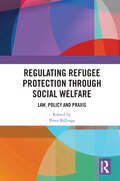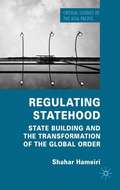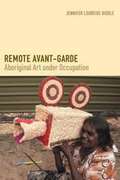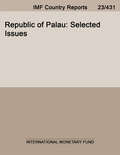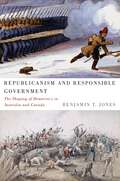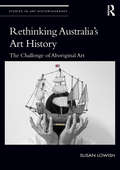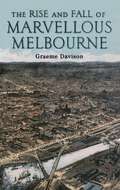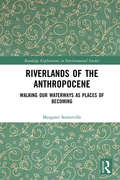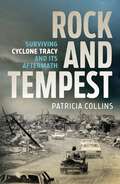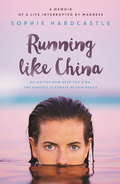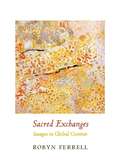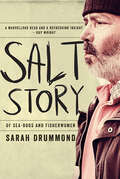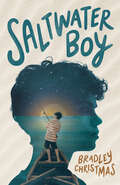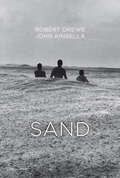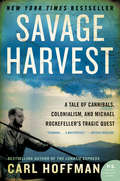- Table View
- List View
Redefining Asia Pacific Higher Education in Contexts of Globalization: Private Markets And The Public Good (International and Development Education)
by Deane E. Neubauer Christopher S. CollinsThis edited volume addresses the dynamic global contexts redefining Asia Pacific higher education, including cross-border education, capacity and national birthrate profiles, pressures created within ranking/status systems, and complex shifts in the meanings of the public good that influence public education in an increasingly privatized world.
Reel Men: Australian Masculinity in the Movies 1949-1962
by Chelsea BarnettSet against the shifting social and political backdrop of a nation throwing off the shackles of one war yet faced with the instability of the new world order, Reel Men probes the concept of 1950s masculinity itself, asking what it meant to be an Australian man at this time. Offering a compelling exploration of the Australian fifties, the book challenges the common belief that the fifties was a 'dead' era for Australian filmmaking. Reel Men engages with fourteen Australian feature films made and released between 1949 and 1962, and examines the multiple masculinities in circulation at this time. Dealing with beloved Australian films like Jedda (1955), Smiley (1956), and The Shiralee (1957), and national icons of the silver screen including Chips Rafferty, Charles 'Bud' Tingwell, and Peter Finch, Reel Men delves into our cultural past to dismantle powerful assumptions about film, the fifties, and masculinity in Australia.
Reflections on the Commemoration of the First World War: Perspectives from the Former British Empire (Routledge Studies in First World War History)
by David Monger; and Sarah MurrayThe First World War’s centenary generated a mass of commemorative activity worldwide. Officially and unofficially; individually, collectively and commercially; locally, nationally and internationally, efforts were made to respond to the legacies of this vast conflict. This book explores some of these responses from areas previously tied to the British Empire, including Australia, Britain, Canada, India and New Zealand. Showcasing insights from historians of commemoration and heritage professionals it provides revealing insider and outsider perspectives of the centenary. How far did commemoration become celebration, and how merited were such responses? To what extent did the centenary serve wider social and political functions? Was it a time for new knowledge and understanding of the events of a century ago, for recovery of lost or marginalised voices, or for confirming existing clichés? And what can be learned from the experience of this centenary that might inform the approach to future commemorative activities? The contributors to this book grapple with these questions, coming to different answers and demonstrating the connections and disconnections between those involved in building public knowledge of the ‘war to end all wars’.
Refugee Externalisation Policies: Responsibility, Legitimacy and Accountability (Routledge Series on Global Order Studies)
by Azadeh DastyariThis book examines the impact and effects of refugee externalisation policies in two regions: Australia’s border control practices in Southeast Asia and the Pacific and the activities of the European Union and its member states in North Africa. The book assesses the underlying motivations, processes, policy frameworks, and human rights violations of refugee externalisation practices. Case studies illuminate the funding, institutional partnerships, geopolitical impacts, financial costs, and the human price of refugee externalisation. It provides the first truly comparative analysis of asylum externalisation and explores maritime interdiction, extraterritorial process, containment and third-country interception, and communication campaigns in Southeast Asia and the Middle East/North Africa. This book will be of key interest to scholars and students of refugee and asylum studies, law, politics, and the arts, legal practitioners, non-government organisations, and policymakers grappling with the issues of detention, refugee externalisation practices, and the growing need to find safety for the world’s most vulnerable.
Regional Energy Transitions in Australia: From Impossible to Possible (Routledge Studies in Energy Transitions)
by John Wiseman Edwards, Gareth A. S. Amanda CahillThis book provides an accessible and critical appraisal of Australia’s regional energy transition initiatives.The book begins by situating Australian energy transition in the context of Australian and international debates about climate change and energy transition. It then explores how energy transition planning was made possible in Australia’s regional energy heartlands even while public transition planning was impossible. The authors consider five case studies of key early transition initiatives in the Latrobe Valley (Victoria), Hunter Valley (NSW), Central Queensland (Queensland), Port Augusta (South Australia) and Collie (Western Australia). They explore how transition came onto the agenda and outline the key actors, decision points and actions. The authors critically assess the successes and failures of each initiative, drawing out key learnings for other regions. The book concludes by evaluating the key cross-cutting themes emerging from the five case studies and draws out the lessons they teach about how to achieve a just transition.This concise book will be of great interest to students and scholars of energy transitions, climate action, social justice, economic renewal and regional transition challenges and strategies, both in Australia and overseas.
Regulating Refugee Protection Through Social Welfare: Law, Policy and Praxis
by Peter BillingsThis book analyses the use and abuse of social welfare as a means of border control for asylum seekers and refugees in Australia. Offering an unparalleled critique of the regulation and deterrence of protection seekers via the denial or depletion of social welfare supports, the book includes contributions from legal scholars, social scientists, behavioural scientists, and philosophers, in tandem with the critical insights and knowledge supplied by refugees. It is organised in three parts, each framed by a commentary that serves as an introduction, as well as offering pertinent comparative perspectives from Europe. Part One comprises three chapters: a rights-based analysis of Australia’s ‘hostile environment’ for protection seekers; a searing critique of welfare policing of asylum seekers as ‘necropolitics’; and a unique philosophical perspective that grounds scrutiny of Australia’s policing of asylum seekers. Part Two contains five chapters that uncover and explore the lived experiences and adverse impacts of different social welfare restrictions for refugee protection seekers. Finally, the chapters in Part Three offer distinct views on human rights advocacy movements and methods, and the scope for resistance and change to the status quo. This book will appeal to an international, as well as an Australian, readership with interests in the areas of human rights, immigration and refugee law, social welfare law/policy, social work, and public health.
Regulating Statehood: State Building and the Transformation of the Global Order
by Shahar HameiriShahar Hameiri argues that state building interventions are creating a new form of transnationally regulated statehood. Using case-studies from the Asia-Pacific, he analyzes the politics of state building and the implications for contemporary statehood and the global order.
Remembered by Heart
by Sally MorganA collection of powerful, true stories of Aboriginal life This anthology brings together 15 memoirs of growing up Aboriginal in Australia and includes works from Kim Scott, Australia's first indigenous Miles Franklin winner; bestselling author Sally Morgan; and the critically acclaimed artist, author, and activist Bronwyn Bancroft. These true stories of adolescence are as diverse as they are moving, and offer readers insight into the pain, humor, grief, hope, and pride that makes up Indigenous experiences.
Remote Avant-Garde: Aboriginal Art under Occupation
by Jennifer Loureide BiddleIn Remote Avant-Garde Jennifer Loureide Biddle models new and emergent desert Aboriginal aesthetics as an art of survival. Since 2007, Australian government policy has targeted "remote" Australian Aboriginal communities as at crisis level of delinquency and dysfunction. Biddle asks how emergent art responds to national emergency, from the creation of locally hunted grass sculptures to biliterary acrylic witness paintings to stop-motion animation. Following directly from the unprecedented success of the Western Desert art movement, contemporary Aboriginal artists harness traditions of experimentation to revivify at-risk vernacular languages, maintain cultural heritage, and ensure place-based practice of community initiative. Biddle shows how these new art forms demand serious and sustained attention to the dense complexities of sentient perception and the radical inseparability of art from life. Taking shape on frontier boundaries and in zones of intercultural imperative, Remote Avant-Garde presents Aboriginal art "under occupation" in Australia today.
Republic of Palau: Selected Issues (Imf Staff Country Reports #Country Report No. 14/111)
by International Monetary Fund. Asia and Pacific DeptA report from the International Monetary Fund.
Republicanism and Responsible Government
by Benjamin T. JonesDespite remarkable similarities, little attempt has been made to compare the political development of colonial-era Australia and Canada. Both nations were born as British colonies and used violent and non-violent means to agitate for democratic freedoms. Republicanism and Responsible Government explores how these sister colonies transformed the very nature of the British Empire by insisting on democratic self-rule. Focusing on the middle of the nineteenth century, Benjamin Jones explores key points in colonial Australian and Canadian history - Canada's Rebellions of 1837-38 and the Durham Report, and Australia's anti-transportation movement and the Eureka Stockade. Previously, historians have looked to liberalism when explaining radicalism and democratization. Jones, however, contends that Canadian and Australian radicals and reformers were influenced by the ancient political philosophy of civic republicanism, with its focus on collectivism, civic duty, and virtue. William Lyon Mackenzie and John Dunmore Lang, he argues, did not champion republicanism to achieve individual rights but to create a virtuous society free from the corruption they saw in the status quo. Republicanism and Responsible Government challenges traditional interpretations of key events in Australian and Canadian history and shows that even though both nations remain constitutional monarchies, republican ideas have shaped their foundations since the earliest days of settlement.
Republicanism and Responsible Government: The Shaping of Democracy in Australia and Canada
by Benjamin T. JonesAn exploration of the radical ideas and violent struggles that shaped colonial Australia and Canada.
Rethinking Australia’s Art History: The Challenge of Aboriginal Art (Studies in Art Historiography)
by Susan LowishThis book aims to redefine Australia’s earliest art history by chronicling for the first time the birth of the category "Aboriginal art," tracing the term’s use through published literature in the late eighteenth, nineteenth and early twentieth centuries. Susan Lowish reveals how the idea of "Aboriginal art" developed in the European imagination, manifested in early literature, and became a distinct classification with its own criteria and form. Part of the larger story of Aboriginal/European engagement, this book provides a new vision for an Australian art history reconciled with its colonial origins and in recognition of what came before the contemporary phenomena of Aboriginal art.
Rethinking the Victim: Gender and Violence in Contemporary Australian Women's Writing (Routledge Research in Postcolonial Literatures)
by Sue Kossew Anne BrewsterThis book is the first to examine gender and violence in Australian literature. It argues that literary texts by Australian women writers offer unique ways of understanding the social problem of gendered violence, bringing this often private and suppressed issue into the public sphere. It draws on the international field of violence studies to investigate how Australian women writers challenge the victim paradigm and figure women’s agencies. In doing so, it provides a theoretical context for the increasing number of contemporary literary works by Australian women writers that directly address gendered violence, an issue that has taken on urgent social and political currency. By analysing Australian women’s literary representations of gendered violence, this book rethinks victimhood and agency, particularly from a feminist perspective. One of its major innovations is that it examines mainstream Australian women’s writing alongside that of Indigenous and minoritised women. In doing so it provides insights into the interconnectedness of Australia’s diverse settler, Indigenous and diasporic histories in chapters that examine intimate partner violence, violence against Indigenous women and girls, family violence and violence against children, and the war and political violence.
Return to Sender
by Lauren DraperThis layered and compelling cozy mystery is all about found family, first love, and one town’s tragedies, perfect for fans of Melina Marchetta, Kristin Dwyer, and Nina LaCour.Brodie McKellon didn’t leave town in handcuffs; not exactly. But all the same, in only one night, she lost her best friends and her home. And that same night, the town of Warwick lost the Adder Stone, a supposedly magical ring of local legend.The events, Brodie maintains, were not related.Four years later, Brodie’s returned to Warwick to identify the real thief and get back everything she lost. She can clear her name, win back her friends Elliott and Levi, and save Gran’s house from the bank.But as Brodie starts investigating, she gets pulled into a different mystery, of three friends and their “dead letters”—mail that’s been lost over the years. And soon she finds that there are times when the things you find aren’t the things you even knew you had lost. A house becomes a home. Some friends become family. And other friends, well, they might become something more. As long as Brodie can be brave enough to find herself.
Return to Uluru: The Hidden History of a Murder in Outback Australia
by Mark McKenna"THIS WEEK'S HOTTEST NEW RELEASES: Murder befouls the outback... [A] gripping work of true crime." —USA TODAYReturn to Uluru explores a cold case that strikes at the heart of white supremacy—the death of an Aboriginal man in 1934; the iconic life of a white, "outback" police officer; and the continent's most sacred and mysterious landmark.Inside Cardboard Box 39 at the South Australian Museum&’s storage facility lies the forgotten skull of an Aboriginal man who died eighty-five years before. His misspelled name is etched on the crown, but the many bones in boxes around him remain unidentified. Who was Yokununna, and how did he die? His story reveals the layered, exploitative white Australian mindset that has long rendered Aboriginal reality all but invisible. When policeman Bill McKinnon&’s Aboriginal prisoners escape in 1934, he&’s determined to get them back. Tracking them across the so called "dead heart" of the country, he finds the men at Uluru, a sacred rock formation. What exactly happened there remained a mystery, even after a Commonwealth inquiry. But Mark McKenna&’s research uncovers new evidence, getting closer to the truth, revealing glimpses of indigenous life, and demonstrating the importance of this case today. Using McKinnon&’s private journal entries, McKenna paints a picture of the police officer's life to better understand how white Australians treat the center of the country and its inhabitants. Return to Uluru dives deeply into one cold case. But it also provides a searing indictment of the historical white supremacy still present in Australia—and has fascinating, illuminating parallels to the growing racial justice movements in the United States.
Rise And Fall Of Marvellous Melbourne
by Graeme DavisonIn the 1880s, a generation after the gold rushes, Melbourne rose to become Australia's most populous, modern and self-consciously 'metropolitan' city. Its offices and warehouses leapt skyward, its suburbs sprawled and the tentacles of its commerce reached across the continent. In the 1890s, the housing boom burst, depression struck and Melbourne's population and influence declined. In this classic work of Australian social history, Graeme Davison explores the economic, political, social and cultural consequences of the meteoric rise, and calamitous fall, of the city dubbed 'Marvellous Melbourne'. Twenty-six years after this much-acclaimed book was first published, Davison offers a reappraisal of his original ideas in a new preface and epilogue. The book has also been enhanced by a series of picture essays exploring the response of contemporary artists and photographers to the transformation of city and suburbs.
Riverlands of the Anthropocene: Walking Our Waterways as Places of Becoming (Routledge Explorations in Environmental Studies)
by Margaret SomervilleThis is an invitation to readers to ponder universal questions about human relations with rivers and water for the precarious times of the Anthropocene. The book asks how humans can learn through sensory embodied encounters with local waterways that shape the architecture of cities and make global connections with environments everywhere. The book considers human becomings with urban waterways to address some of the major conceptual challenges of the Anthropocene, through stories of trauma and healing, environmental activism, and encounters with the living beings that inhabit waterways. Its unique contribution is to bring together Australian Aboriginal knowledges with contemporary western, new materialist, posthuman and Deleuzean philosophies, foregrounding how visual, creative and artistic forms can assist us in thinking beyond the constraints of western thought to enable other modes of being and knowing the world for an unpredictable future. Riverlands of the Anthropocene will be of particular interest to those studying the Anthropocene through the lenses of environmental humanities, environmental education, philosophy, ecofeminism and cultural studies.
Rock and Tempest: Surviving Cyclone Tracy and its Aftermath
by Patricia CollinsWhen Cyclone Tracy flattened Darwin on Christmas Day 1974, it was the worst natural disaster Australians had ever experienced. Stationed in the city with the Women's Royal Australian Naval Service, Patricia Collins not only lived through Tracy but was part of the massive clean-up effort. This is her extraordinary story. The experience of living through a terrifying natural disaster is chillingly told by Collins as she recounts her own dark hours that Christmas, along with those of her contemporaries. They sat huddled in doorways and bathtubs as the winds raged, lifting off roofs, picking up cars and sinking ships. Most of the city was destroyed. Seventy-one people died.The Navy suffered terrible losses. A patrol boat was sunk with the loss of two crewmen and another was driven onto rocks. A sailor lost his wife and two children, and another lost his young son.In the days after Tracy, the majority of Darwin's population was evacuated interstate as the Navy's Task Force arrived to clean up and rebuild. Collins was there as a survivor of Tracy and now an integral part of the recovery.Rock and Tempest contains astonishing first-person accounts of terror and uncertainty as well as courage and survival. It is fascinating and moving, and absolutely essential reading.
Running like China: A memoir of a life interrupted by madness
by Sophie HardcastleFrom a talented emerging Australian writer, a brave, honest, unforgettable memoir about mental illness that breaks the silence and shatters the taboos to give hope to all those struggling to find their way through.'When I was eleven years old Mum told me, "One crowded hour of glorious life is worth an age without a name." Even before I heard these words I was always a child who crammed intense joy into tiny pockets of time.'One day Sophie Hardcastle realised the joy she'd always known had disappeared. She was constantly tired, with no energy, no motivation and no sense of enjoyment for surfing, friends, conversations, movies, parties, family - for anything. Her hours became empty. And then, the month before she turned seventeen, that emptiness filled with an intense, unbearable sadness that made her scream and tear at her skin. Misdiagnosed with chronic fatigue, then major depression, then temporal lobe epilepsy, she was finally told - three years, two suicide attempts and five hospital admissions later - that she had Bipolar 1 Disorder.In this honest and beautifully told memoir, Sophie lays bare her story of mental illness - of a teenage girl using drugs, alcohol and sex in an attempt to fix herself; of her family's anguish and her loss of self. It is a brave and hopeful story of adaptation, learning to accept and of ultimately realising that no matter how deep you have sunk, the surface is always within reach. Running Like China shatters the silence and smashes the taboos around mental illness. It is an unforgettable story.
Sacred Exchanges: Images in Global Context (Columbia Themes in Philosophy, Social Criticism, and the Arts)
by Robyn FerrellAs the international art market globalizes the indigenous image, it changes its identity, status, value, and purpose in local and larger contexts. Focusing on a school of Australian Aboriginal painting that has become popular in the contemporary art world, Robyn Ferrell traces the influence of cultural exchanges on art, the self, and attitudes toward the other.Aboriginal acrylic painting, produced by indigenous women artists of the Australian Desert, bears a superficial resemblance to abstract expressionism and is often read as such by viewers. Yet to see this art only through a Western lens is to miss its unique ontology, logics of sensation, and rich politics and religion. Ferrell explores the culture that produces these paintings and connects its aesthetic to the brutal environmental and economic realities of its people. From here, she travels to urban locales, observing museums and department stores as they traffic interchangeably in art and commodities. Ferrell ties the history of these desert works to global acts of genocide and dispossession. Rethinking the value of the artistic image in the global market and different interpretations of the sacred, she considers photojournalism, ecotourism, and other sacred sites of the western subject, investigating the intersection of modern art and postmodern culture. She ultimately challenges the primacy of the "European gaze" and its fascination with sacred cultures, constructing a more balanced intercultural dialogue that deemphasizes the aesthetic of the real championed by western philosophy.
Salt Story: Of Sea-Dogs and Fisherwomen
by Sarah DrummondIn this warm, lively account of living on and by the sea, Sarah Drummond writes of life as an apprentice fisherwoman. Through her firsthand experience with small-scale commercial fishing in the Great Southern, Drummond documents a way of life—fishing—that is slowly dying as waters become politicized and fished out. She writes of fishing, of feuds, and of all the fish that got away. Salt Story is a tribute to sea-dogs, fisherwomen, oystermen, and storytellers everywhere.
Saltwater Boy
by Bradley ChristmasWhen Matthew's dad gets in trouble, he makes trouble for everyone else too. But with Dad in jail, Matthew and his mom have a chance to put their pieces back together. Mom makes plans for a summer down the coast, fixing up Grandpa's old place in an effort to make ends meet. The beach, the swirling rockpools, and the vast ocean offer new perspective and promise for Matthew as he strikes up a friendship with Bill, an old local who recognizes a fellow 'Saltwater Boy.' Bill shows Matthew how to find pippis and catch fish (and even make a few dollars from it). Bill becomes the paternal figure that Dad isn't—wise and patient—but Bill isn't welcomed in town, and Matthew begins to witness old rivalries and buried truths resurface. Then Dad gets out on parole, and his recklessness puts everything, and everyone, at risk. Heartfelt and poignant, this captivating coming-of-age story navigates the difficult terrain of fractured families, the lies that break, and the ties that bind.
Sand
by John Kinsella Robert DreweA collection of prose, poetry, and memoir, this collaboration celebrates the profound effect environment has on our stories, assumptions, and geographical reckonings, just as it evokes childhood nostalgia and a sense of place. In a dialogue of perceptions, two of Australia’s foremost authors explore a common geography and memories—both cultural and personal—as they consider the theme of “sand” from intimate, geological, and historical points of view.
Savage Harvest
by Carl HoffmanThe mysterious disappearance of Michael Rockefeller in remote New Guinea in 1961 has kept the world, and even Michael's powerful, influential family, guessing for years. Now, Carl Hoffman uncovers startling new evidence that finally tells the full, astonishing story. On November 21, 1961, Michael C. Rockefeller, the twenty-three-year-old son of New York governor Nelson Rockefeller, vanished off the coast of southwest New Guinea when his catamaran capsized while crossing a turbulent river mouth. He was on an expedition to collect art for the Museum of Primitive Art, which his father had founded in 1957, and his expedition partner--who stayed with the boat and was later rescued--shared Michael's final words as he swam for help: "I think I can make it."Despite exhaustive searches by air, ground, and sea, no trace of Michael was ever found. Soon after his disappearance, rumors surfaced that he'd made it to shore, where he was then killed and eaten by the local Asmat--a native tribe of warriors whose complex culture was built around sacred, reciprocal violence, headhunting, and ritual cannibalism. The Dutch government and the Rockefeller family vehemently denied the story, and Michael's death was officially ruled a drowning. While the cause of death was accepted publicly, doubts lingered and sensational stories circulated, fueling speculation and intrigue for decades. The real story has long waited to be told--until now.Retracing Michael's steps, award-winning journalist Carl Hoffman traveled to the jungles of New Guinea, immersing himself in a world of former headhunters and cannibals, secret spirits and customs, and getting to know generations of Asmat. Through exhaustive archival research, he uncovered hundreds of pages of never-before-seen original documents and located witnesses willing to speak publicly for the first time in fifty years. In Savage Harvest Hoffman finally solves this decades-old mystery and illuminates a culture transformed by years of colonial rule, whose people continue to be shaped by ancient customs and lore. Combining history, art, colonialism, adventure, and ethnography, Savage Harvest is at once a mesmerizing whodunit and a fascinating portrait of the clash between two civilizations that resulted in the death of one of America's richest and most powerful scions.
